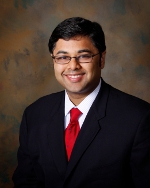 Surgeons and researchers at the University of California, San Francisco recently extracted data on hospital readmissions following spine surgery at UCSF to determine the reason for the readmissions. They found the number of readmissions attributed to the spine surgeons was significantly larger than the surgeons found appropriate because the "all-cause readmission algorithm" inappropriately included patients who were readmitted for planned second stage surgeries as well as patients who returned to the hospital for issues unrelated to their spinal procedure. The database included 5,780 initial patient encounters with spine surgeons at UCSF and 281 instances of readmission within 30 days.
Surgeons and researchers at the University of California, San Francisco recently extracted data on hospital readmissions following spine surgery at UCSF to determine the reason for the readmissions. They found the number of readmissions attributed to the spine surgeons was significantly larger than the surgeons found appropriate because the "all-cause readmission algorithm" inappropriately included patients who were readmitted for planned second stage surgeries as well as patients who returned to the hospital for issues unrelated to their spinal procedure. The database included 5,780 initial patient encounters with spine surgeons at UCSF and 281 instances of readmission within 30 days.However, 69 of the readmissions were second stage planned surgeries or were unrelated to spinal surgery. In 14 cases, patients returned because their surgery was cancelled and rescheduled electively. In 39 cases, the readmission was actually a planned, second stage surgery, such as ALIF after a posterior lumbar scoliosis surgery. There were 16 cases where patients returned to the hospital for reasons unrelated to the index spine surgery, such as a twisted ankle after lumbar disc surgery.
After calculating these differences, the researchers found the costs of hospital readmissions attributed to the spine surgeons dropped 29 percent, reflecting a $3 million cost variance. There are proposals to financially penalize hospitals for such readmissions.
Praveen Mummaneni, MD, co-author of the study discusses their findings and what implications the report will have in the future.
Q: What impact does this research have for spine surgeons?
Dr. Praveen Mummaneni: This study was really eye-opening because we found that 29 percent of what we considered to be reasonably related readmissions were not related to the index spine surgery. Such administrative data reports should exclude planned second stage surgeries (i.e a staged alif for patients undergoing surgery for scoliosis) and cases where the readmissions were unrelated to spine surgery. For example, if someone had surgery on their spine and then later tripped and twisted their ankle and came back for orthopedic services, that was counted as a readmission. The automated report would say it was a readmission attributed to the spine surgeon when really it was not.
There were multiple instances like that and when readmission rates will count against us that will be a problem. If payors (insurance companies or Medicare) withheld payments for the 29 percent of our readmissions that shouldn't have been counted in the first place, it would have been at a $3 million cost to the University. We were astounded by that.
Q: What should be done to fix this issue?
PM: We shared this information with the United HealthSystem Consortium (UHC), the member organization of over 95 percent of non-profit academic medical centers and asked if planned admissions can be identified so that these cases would not count against the surgeon. I think there is something that can be done with the algorithm to correct this overestimation of relevant readmissions, and surgeons need to get involved and reexamine the reported rates at their hospitals.
We sat down with UHC and they also have concerns with using all cause readmission rates without the ability to drilldown to the cases. They note the flexibility of their database to sort readmissions by numerous variables including principle diagnosis and procedure. The UHC CDB Report Builder allows drilldown ability to the case level. They are trying to work with us to add a planned readmission field to the data feed for the hospital to submit with the data to help hospitals sort planned readmissions. UHC continues to work with its members to make its tools actionable to drive process improvement to deliver optimal patient care.
Q: How do these numbers impact national benchmarks?
PM: If you are trying to benchmark yourself against a national readmissions number that isn't realistic, that isn't a fair benchmark. Surgeons can look at our article, which will come out next month in the Journal of Neurosurgery: Spine, and identify our top four reasons for inappropriate readmissions and then compare them with their institutions. I think they will capture most of the unnecessary readmissions if they look at our top four unrelated categories.
Using readmissions as a benchmarking metric will be more fair once the algorithm has been adjusted and validated with the correct filters.
Q: Are payors taking these numbers into account? How will coverage be impacted in the future?
PM: I think the payors have to take into account that not every readmission is preventable and surgeons are not able to prevent many readmissions.
If they don't take that into account, they aren't working with reality. There are some things that are not preventable and some things that are. It's going to be devastating if they don't pay for readmissions that are not related to spine surgery. It would inhibit patient care. You can't provide a high level of care and lose money on the second admission — it's not financially viable for hospitals and physicians. That's going to become a patient access issue for those needing complex spine care.
More Articles on Spinal Surgery:
8 Steps to Optimize Spine Practice Revenue in 2013
50 Spine Surgeons Focusing on Scoliosis Development
16 Spine Devices Receive FDA 510(k) Clearance in November